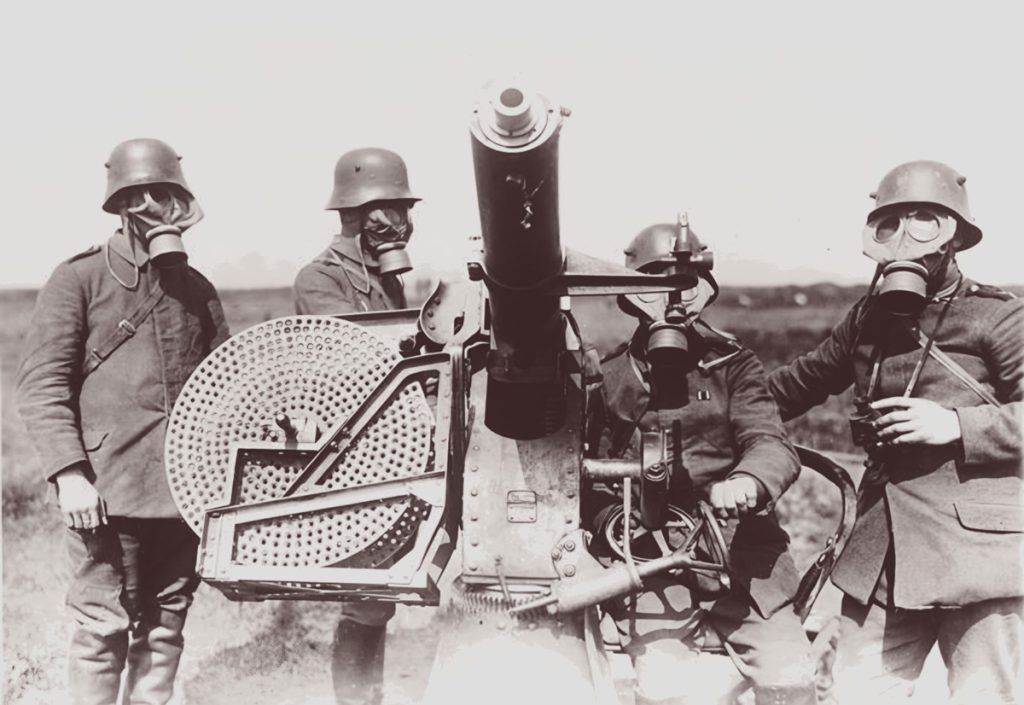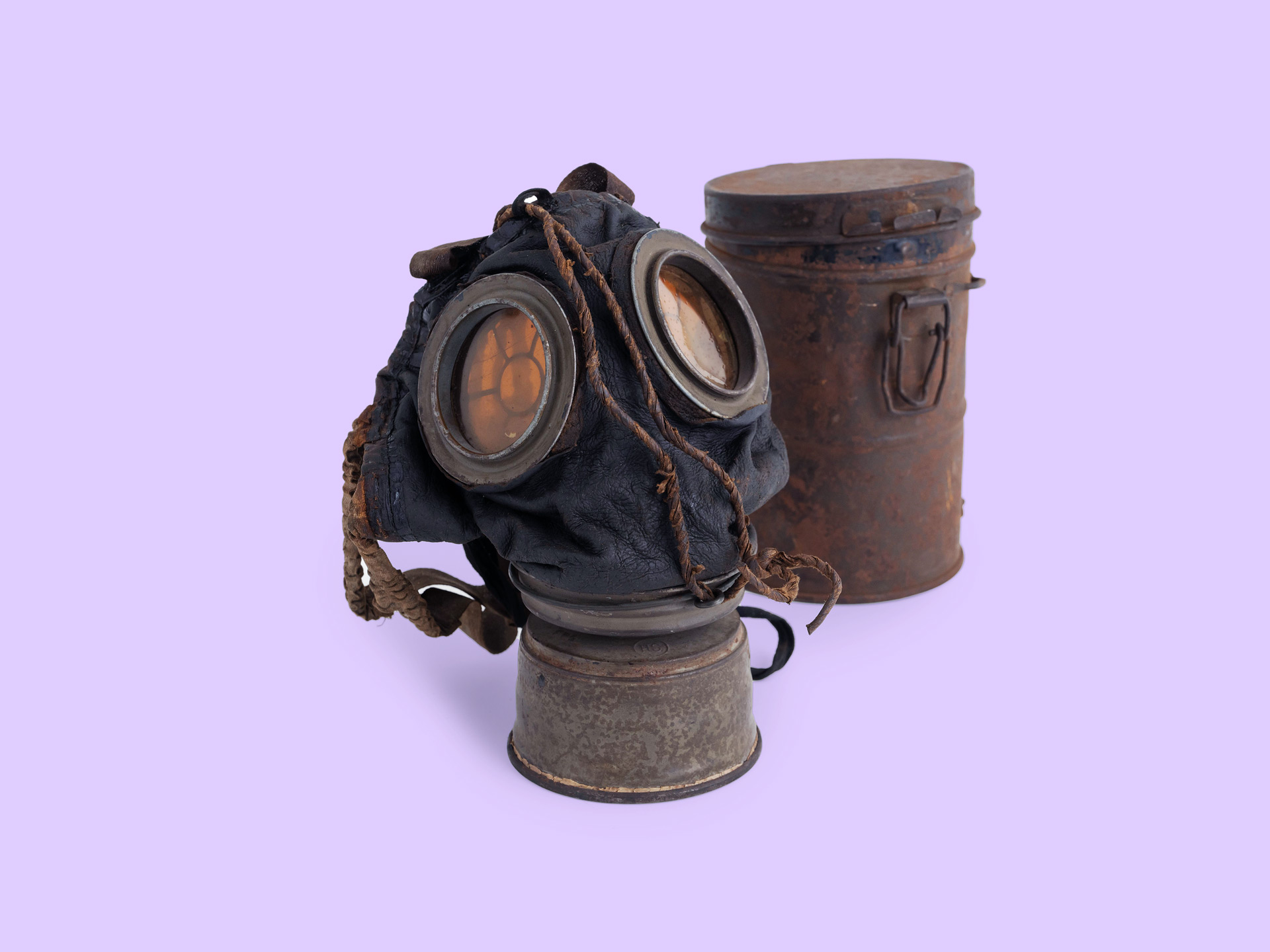The first weapon of mass destruction
Unable to break the stalemate on the Western Front using conventional weaponry, the German High Command took the decision on 22 April 1915 to deploy poison gas in order to clear a gap in the Allied line. At this stage, the weaponization of gas involved its release into the wind, thereby driving the toxin into enemy positions. As this method proved to be too dependent on weather conditions, gas-filled artillery shells were developed which could be delivered with greater precision. The gas war reached its peak in 1918, with an estimated one in three shells fired at the time containing poisonous chemicals.
A total of 45 different toxic agents were used by the Allies and the Central Powers in the search for the most effective weapon. Regardless of the gas used, the consequences involved were always horrific. First, gassed soldiers suffered a painful irritation of the respiratory tract and eyes, followed by chemical reactions in the body that led to massive difficulty breathing, and often to the lungs filling with fluid, which proved fatal. Certain gas mixtures could also penetrate clothing and caused severe skin irritation and burns.
Gas masks, canaries and dogs save human lives
The American Garrett Morgan submitted a patent for the first gas mask on 13 October 1914, less than three months after the start of the war. Morgan shares the credit as the inventor of the gas mask with the Canadian Cluny MacPherson, who was working on breathing masks at the same time. Despite their effectiveness against all types of airborne poison, a gas mask could only provide protection if the soldiers were warned of the attack in good time and were able to put on their masks before breathing in the deadly substance. Canaries and dogs trained to react to changes in the composition of the air provided the necessary warning.
The first gas masks were rushed into service and soon upgraded. The German models were numbered in accordance with their year of issue.

German soldiers with gas masks on the Maschinen-Flak M 14 photo, ca. 1916/1918, Germany (Source: Bundesarchiv via Wikimedia Commons, Bild 183-R52907, CC-BY-SA 3.0)
Thus the “Gas mask 17” on display in the Deutschlandmuseum replaced its predecessor the “Gas mask 16” in June 1917. Carried in a special quick-access tin, it was always ready to hand. The tighter fit of the leather “Gas mask 17” was intended to improve the seal to the face. The double eye windows were reinforced with fine metal wires known as spiders. Its activated carbon filter was far more effective than previous models which used cotton fabric.
Gas: an effective weapon?
Although some 90,000 soldiers had died from the direct effects of poison gas by the end of the First World War, and over a million suffered chemical burns and long-term physical and mental injury, the figures pale in comparison with total losses of 10 million war dead.
The large-scale use of poison gas proved to be comparably ineffective. Nevertheless, the nature of the suffering caused by this invisible weapon has made the gas mask into a symbol of the First World War and Gas Mask 17 one of the most expressive exhibits in the Deutschlandmuseum.
Property information
Designation
- Date 1914-1918
- Gallery Imperial Germany
- Category Headgear
- Origin Germany
- Dimensions 20x20x15 cm (WxHxD)
- Material glass, leather, metal
Property information
Designation
- Datierung 1914-1918
- Epochenraum Imperial Germany
- Kategorie Headgear
- Herkunft Germany
- Dimensionen 20x20x15 cm (WxHxD)
- Material glass, leather, metal

About the Deutschlandmuseum
An immersive and innovative experience museum about 2000 years of German history
Reading tips and links
Lifesaver? The German Steel Helmet in the First World War
German Tank Museum Munster
Lifesaver? The German Steel Helmet in the First World War
German Tank Museum Munster
Share article
Other objects in this collection
Discover history

Visit the unique Deutschlandmuseum and experience immersive history
2000 Jahre
12 Epochen
1 Stunde




